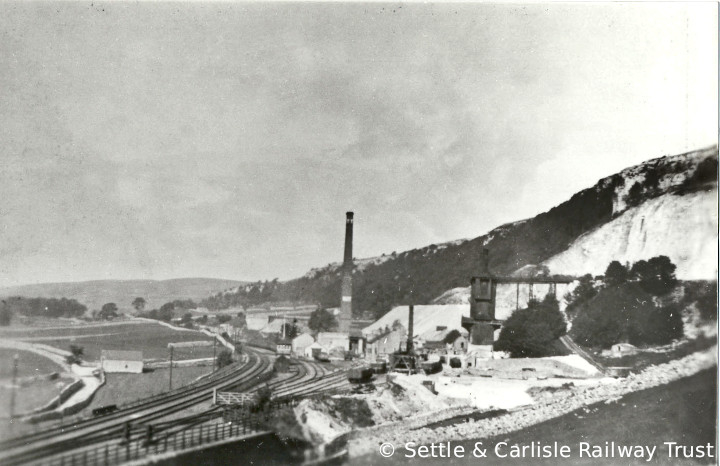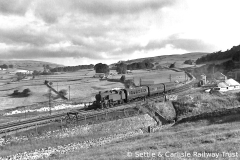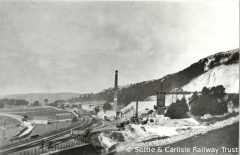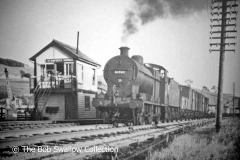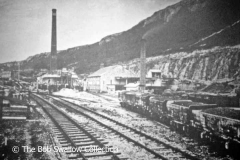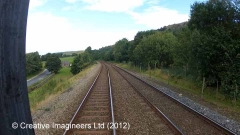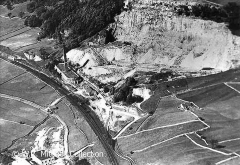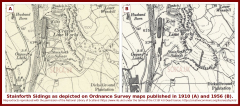The sidings at Stainforth were installed to serve two separate businesses, namely the Craven Lime Company (at the south end of the Langcliffe Quarry site) and Thomas Murgatroyd (a little further to the north). In both cases, limestone was extracted from quarry faces driven into the nearby Winskill Crag, then processed on site (as required to suit customer orders) before being loaded into railway wagons for delivery via the Midland Railway Company's steadily expanding system.
Lime and limestone were being despatched from the site by rail during 1873 and the traffic flow may have begun as early as 1872 (while the Settle & Carlisle Railway was still being constructed and several years before the through-route officially opened).
By April 1876, both companies had their own dedicated railway facilities on this site. The Craven Lime Company had "extensive sidings" to serve its massive (state-of-the-art) Hoffmann kiln, while Thomas Murgatroyd had a single siding to serve its more traditional draw kilns.
Thomas Murgatroyd found it difficult to compete with its larger neighbour and ceased trading within 20 years of opening.
The Craven Lime Company ceased lime production in the 1930s and, in 1939, the site was transferred to Settle Limes Ltd. It was used to store crushed stone, which was initially transported by rail from the Helwith Bridge quarries just a few miles to the north.
Rail traffic to / from the sidings ceased completely at some point prior to 29 Sep 1963 (when Stainforth Sidings Signal Box was officially closed).

